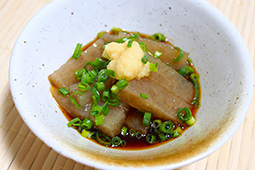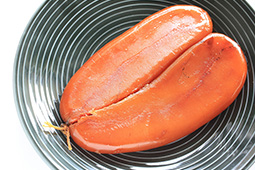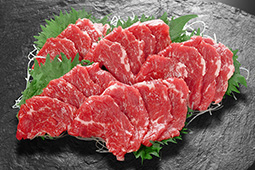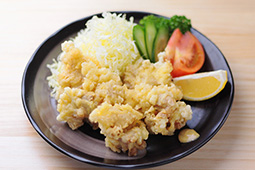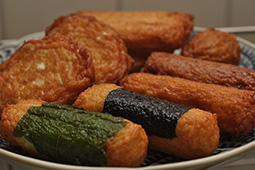Home > Highlighting JAPAN > Highlighting Japan October 2016 > Kyushu Calling
Highlighting JAPAN
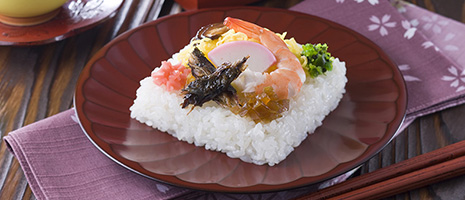
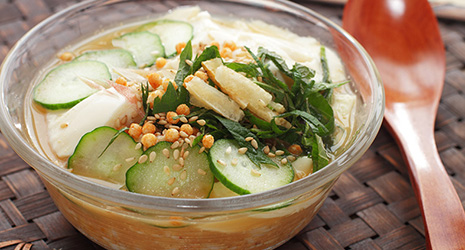
Food, Glorious Kyushu: Seven dishes for seven prefectures
Surrounded by the sea on four sides, Kyushu has since olden times had exchanges with various foreign countries. In addition to foods made from a rich diversity of marine products, Kyushu boasts a great variety of dishes. These include dishes influenced by foreign cultures such as kasutera, a type of sponge cake originating in Spain, but also include dishes passed down from the days of Japanese feudalism. Given Kyushu’s location in the south of Japan, which has a warm climate, locals have had to devise innovative preservation methods, so many foods from Kyushu incorporate the wisdom and ingenuity of Southern Japan. In this article, we highlight one famous dish from each of the island’s seven prefectures.
Okyuto (Fukuoka)
Okyuto is a seaweed noodle dish which is made by boiling and then straining a type of seaweed called egonori (Campylaephora hypnaeoides) which is then cooled until firm. It is rich in dietary fiber and minerals and has virtually no calorie content. Cut into long noodles and served with grated ginger, it is topped with katsuo-bushi (dried skipjack flakes), soy sauce and vinegar. Popular since the Edo period (1603–1867), it still makes frequent appearances on breakfast tables in the Hakata district of Fukuoka. In the old days, elementary school children are said to have sold it for pocket money.
Sukozushi (Saga)
Sukozushi is a kind of pressed sushi with a history that goes back over 500 years. Sushi rice containing mochi (sweet rice) is cut into rectangles which are then arranged in a wooden box called a morobuta and then topped with mutsugoro (mudskipper) basted in sweet sauce, pickles or various other colorful and decorative condiments such as shrimp or kinshitamago. Each individual piece of sushi is regarded as a rice paddy and the kinshitamago, which is arranged in a circle, is regarded as the full moon. It is said to have originated as a dish which the people of a feudal domain served to their lord. Nowadays, it is served as a delicacy on special occasions.
Karasumi (Nagasaki)
Karasumi is made by drying salt-pickled mullet roe naturally in the sun until it has a shiny amber appearance. Karasumi was first introduced from overseas as a food made from Japanese Spanish mackerel roe between the end of the sixteenth to the early seventeenth centuries, but in Nagasaki it came to be prepared using the roe of mullet, which thrive in large numbers in the local seas. The beautiful amber color can be created only by careful preparation from the blood-flushing stage through drying.
Horse Meat Cuisine (Kumamoto)
Basashi is sashimi made from horse meat. Seasoned with grated ginger, grated garlic, Welsh onion and other condiments, it is thin-sliced then eaten with sweet soy sauce, together with thinly sliced raw onion. According to legend, the Daimyo Kiyomasa Kato (1562–1611), who governed Kumamoto, popularized the custom of eating horse meat in Kumamoto. After the Second World War, however, it became popular among common folk to consume horse meat not just as basashi but broiled, smoked and pot-boiled.
Toriten (Oita)
Toriten is a kind of tempura made with chicken. It is a typical food of Oita Prefecture, which consumes more chicken meat than any other prefecture in Japan. The chicken meat is dipped in a base seasoning (shita-aji), rolled in flour and then fried, after which it is served with a hot mustard or other sweet sauce dip. Although frequently prepared in the home, it is also served in a wide variety of places, including restaurants, Japanese style tavern restaurants (izakaya), Chinese restaurants, coffee shops and lunch-box stands (bento-ya). Each establishment has its own style of seasoning and cooking, so a variety of tastes are available.
Hiyajiru (Miyazaki)
Hiyajiru is a dish prepared by pouring cold soup with various ingredients over rice. Though very simple, it is a very nutritious local dish. First, pieces of toasted fish meat are combined with miso, ground in a mortar and then grilled. It is then mixed with a cold soup-stock, or dashi, and served over rice with round-cut pieces of cucumber, chunks of tofu, libiate, sesame and other condiments. It makes a quick meal at meal times between farm work during the hot summer and is prepared so as to provide a fast supply of energy.
Tsukeage (Kagoshima)
Tsukeage is prepared by mixing ground fish meat with vegetables and other ingredients, which are then deep-fried. It is known all over Japan as Satsuma-age largely because it originated in Kagoshima Prefecture, which was formerly the feudal domain of Satsuma. Kagoshima tsukeage is distinctive in having a sweet taste. It is made by adding generous quantities of sweet local sake and brown sugar to the ground meat. The added sugar not only helps keep it fresh but lends it status because, sugar being a precious commodity in the old days, it was served to welcome guests of honor.
© 2009 Cabinet Office, Government of Japan
